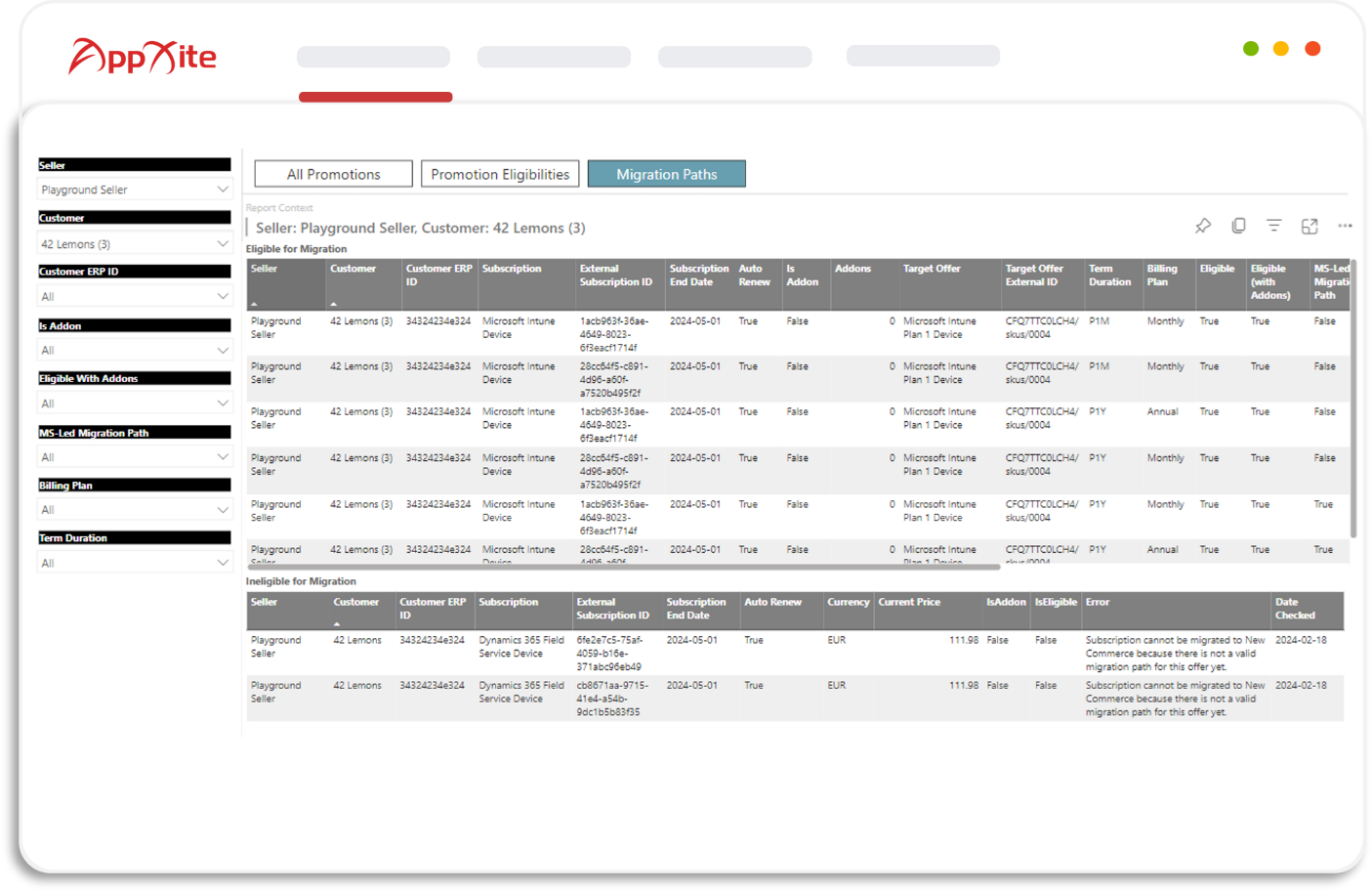In our recent New Commerce Experience (NCE) Update, it was announced that starting from January 2024, Microsoft will start automatic migration of all renewing commercial and public sector subscriptions to the new commerce platform. This process has started effectively and will be ongoing throughout the year 2024. This automatic migration comes with several important changes which, if not managed promptly, could pose financial risks to end-customers and ultimately it can affect sellers as well. In this article, we will provide guidance on how to mitigate potential risks through the management of the migration process and how AppXite's NCE Migration Paths Report can serve as a valuable resource in navigating these changes.
CSP legacy subscriptions are being automatically migrated to the annual billing term.
The core change of migration to NCE is that all legacy subscriptions that Microsoft automatically migrates to new commerce will be set to an annual term while maintaining the original billing plan and the same number of seats as they previously held in legacy. This means that customers who previously had monthly commitments suddenly will have an annual commitment that may cause unexpected financial obligation and dissatisfaction from customers. After the migration, partners will have a seven-day window to modify the subscription term and/or quantity or cancel the subscription, if necessary. Once the seven-day window ends, no further modifications to the subscription's billing term will be permissible.
Customers may not agree on a forced annual commitment.
Failure to manage and discuss these changes with customers prior to their subscription renewal may lead to a risk that customers are not willing to commit to and pay for a certain amount of annual subscriptions. There are many use cases of why this can happen including customers not foreseeing the need to utilize all or a portion of the subscriptions for the entire year due to factors such as labor fluctuations, seasonality, the conclusion of specific projects, or other significant organizational changes.
We recommend that you manage subscription migration for your customers to decide which offer, term, and billing frequency is the best fit in each case. Given that NCE subscriptions have a set of restrictions to change the quantity, billing term, or billing frequency and there is a price difference between different commitment periods, partner expertise is necessary to ensure the correct setup for the customers. In cases where the partner has a fluctuating or seasonal need for licenses, we recommend evaluating purchasing annual commitment for # of licenses that remain constant while for the quantity that fluctuates use in parallel monthly commitment subscription. In this case, if the customer prefers a monthly commitment subscription instead of an annual one, you should migrate them before the legacy subscriptions reach their end of the term in 2024 or make changes during a seven-day window after the automatic migration.
Starting discussion through insights and understanding of customer needs.
To facilitate a well-informed discussion and gain a full understanding of the current status of customer subscriptions, AppXite has introduced a new NCE Migration Paths report. This report identifies which subscriptions are eligible for migration, in which new subscriptions they will be converted to including information like term duration, billing plan, new price, and applicable promotions. It also identifies subscriptions that are not eligible for migration, along with the reasons for their ineligibility.

The NCE Migration Paths Report empowers account managers to efficiently manage the transition of their customers' subscriptions without having to request access to the Partner Center and dig through the list of subscription changes. This will help account managers prepare for conversations with customers about the new subscription billing terms and pricing, outlining the commitment associated with the annual term, and discussing potential adjustments in license quantities or billing arrangements.
This proactive approach, coupled with a deep understanding of customer needs and flexibility in subscription management, is key to navigating the complexities of NCE migration successfully.
.png)
